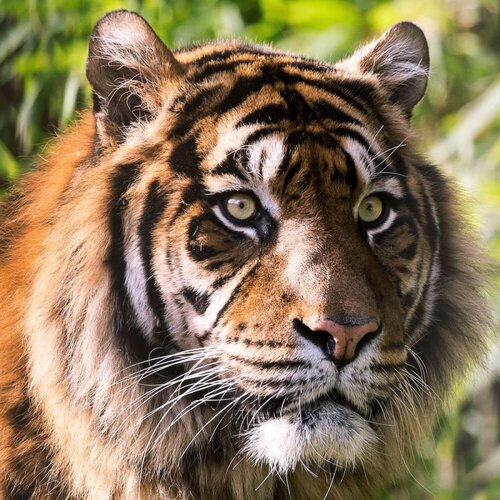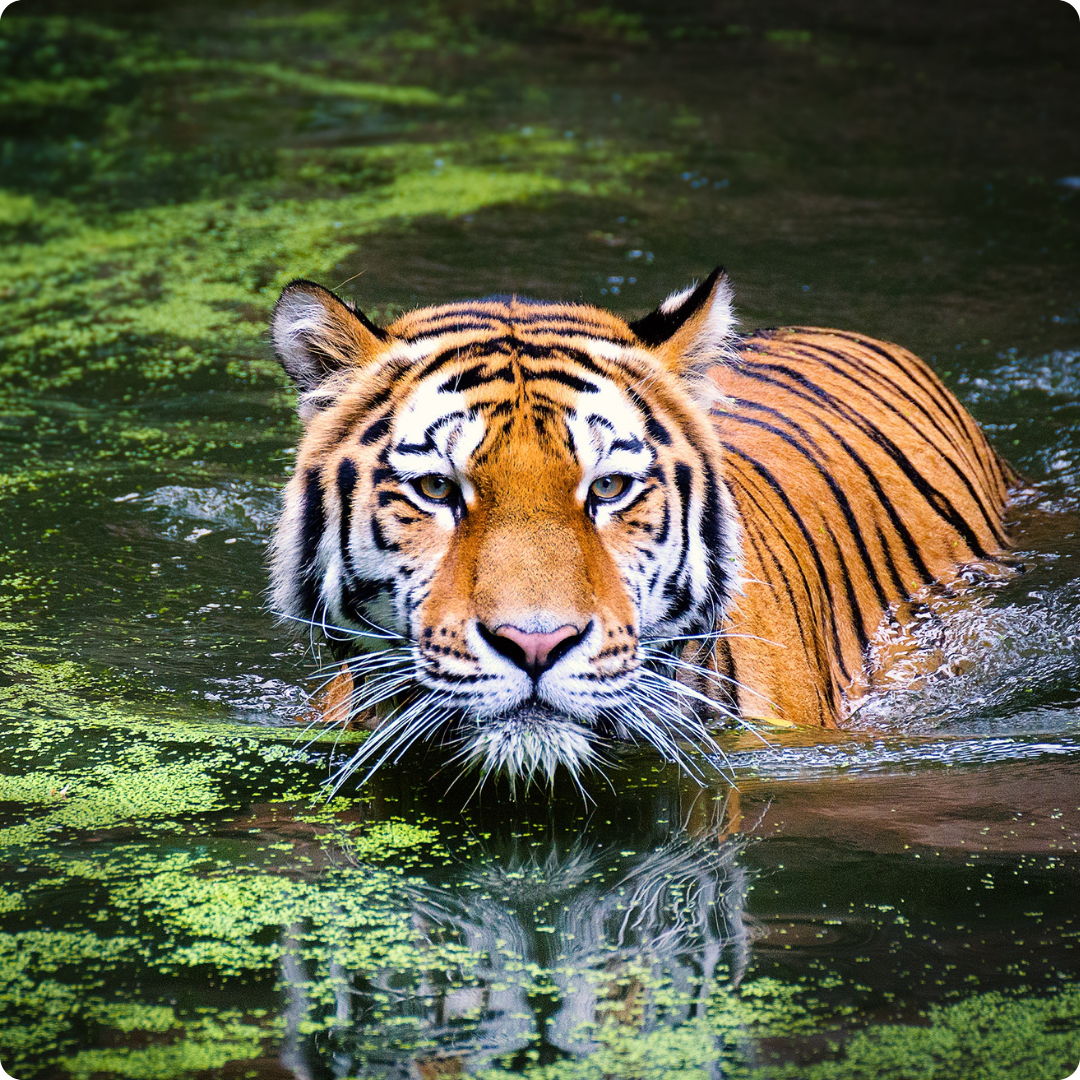
Tiger
Learn all about the awesome tiger, wow your friends with some amazing tiger facts, read about the biggest cat, where they live, how they spend their day and what they eat. Understand what makes tigers so important and why they are threatened.
The biggest big cat!
Tigers are the biggest big cat on earth, male tigers can grow to 3 metres long and weigh up to 300kg, while female tigers tend to be a bit smaller. Tigers are incredibly agile, with flexible bodies designed for running, jumping and climbing. Their retractable claws, powerful jaws and sharp teeth make them awesome hunters.
However, another big cat has been bred in captivity that is even larger. If you breed a male lion with a female tiger, you get a liger. These enormous cats can grow up to 3.6 meters long and can weigh even more than the biggest tigers. The largest liger ever recorded weighed a staggering 550kg.
Today, there are five surviving subspecies of tiger: Sumatran, Siberian, Bengal, South China and Indochinese. Various tiger subspecies are the national animals of Bangladesh, India, North Korea, South Korea and Malaysia.

Where do tigers live?
Less than 100 years ago, tigers could be found across huge areas of Asia. Sadly, hunting and habitat loss have put populations at risk, and today their range has been reduced to a fraction of its former size. There are now very few tigers left in South-East Asia, but they can still be found in India, Nepal, Russia and Bhutan.
Tiger habitats vary by region; the larger tigers, such as the Siberian live in much colder northern areas surviving the brutal 'taiga’ or snow forests, whereas the smaller tigers from warmer regions can live in tropical rainforests and flooded swamplands and mangroves.
Scientists think that India is home to around half of the world’s remaining wild tigers. There are several Indian national parks that are renowned for their frequent tiger sightings, including Bandhavgarh, Ranthambore and Kanha national parks.
How do tigers spend their day?
Tigers are generally solitary, living and hunting alone. The size of their territory varies with the amount of prey available and can be between 20km to 400km, tigers in cold northern regions tend to have the largest territories.
Tigers use scent to communicate – they spray urine and rub their scent on trees and bushes to inform other cats of their location. They may also use scratching posts for communication, as well as to keep their claws sharp.
Tigers are the only big cats to have stripes and individuals can be identified by their pattern, as their stripes are unique. A tigers stripes help them to blend into the colours of their habitat and hide in the long grass when hunting.
Tigers are one of the few big cats that enjoy water and frequently bath in streams and lakes to escape the heat in hot climates.
Females usually give birth to two to three cubs but can have as many as six. Cubs learn to hunt and kill from around six months of age but remain with their mother for at least 15 months, after which time they will leave to find their own territory. On average, tigers give birth to cubs every two years.

What do tigers eat?
Tigers are carnivores but their diet can be quite diverse and include wild pigs, deer, water buffalo, reptiles, birds, fish and even insects.
Tigers rely primarily on sight and sound rather than smell for hunting, they will typically hunt alone and stalk their prey. A tiger’s favourite way of taking down its prey is to lunge at the animal’s neck and hold on tight with its powerful jaws.
Tigers have night vision that is six times better than that of humans, which helps them hunt successfully in the dark.
Why are tigers so important?
Tigers are both admired and feared by people around the world, but they also play an important role in the health and diversity of their habitat. The tiger is the top predator and vital for maintaining the balance between their prey and the vegetation; without tigers to keep numbers down, herbivores can overgraze and damage the land. The presence of tigers in the forest is a good indicator of the well being of the ecosystem.





